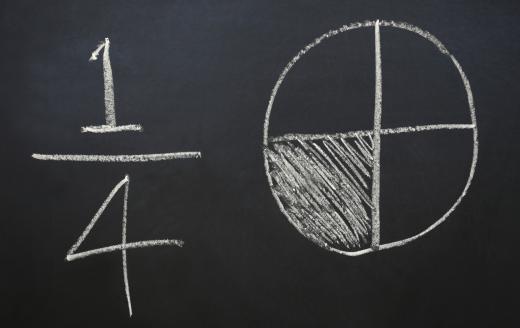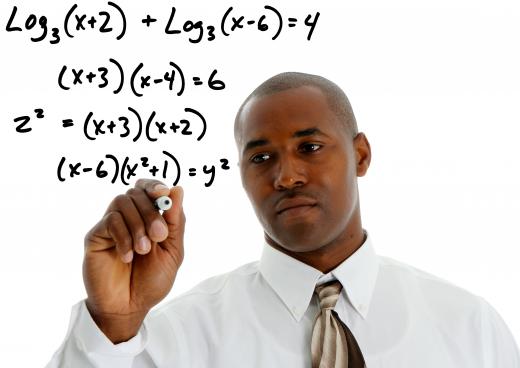At WiseGEEK, we're committed to delivering accurate, trustworthy information. Our expert-authored content is rigorously fact-checked and sourced from credible authorities. Discover how we uphold the highest standards in providing you with reliable knowledge.
What is a Logarithm?
A logarithm is a mathematical term that can also mean “exponent.” As a basic algebraic concept, it is important to understand how to compute logarithms for nearly any math class that involves advanced algebra. Possibly because the wording of logarithm problems is somewhat topsy-turvy, this particular mathematical concept is very easy to misunderstand.
In order to understand what a logarithm is, it is first necessary to know what an exponent is. An exponent is a number written in superscript above a base number, such as 23, that indicates how many times the base should be multiplied by itself. This may be written, alternatively, as “two to the third power”. To compute the total of 23, simply multiply 2 x 2 x 2 to reach 8. Therefore 23=8.

In order to compute a basic logarithm, a person needs two variables: the base number (2) and the total (8). When looking for a logarithm, what is being asked is “What exponent of 2 equals 8?” or “What power of 2 is 8?” In equation form, this is usually written as log28. Since two needs to be raised to the third power to equal eight, the answer to this question is written as log28=3.

A logarithm or power doesn't always have to be a positive whole number. It can also be decimals or fractions, or even negative number. Log164=.5, because 16.5=4. Negative powers require understanding on how to compute the inverse of a positive exponent. To compute a negative logarithm, change it into a positive number, figure out the positive computation, and then divide one by the answer. For instance, to figure out what 5-2 equals, find that 52=25, then divide 1/25 to get .04, therefore log5.04= -2.
There are two major types of logarithms that crop up commonly. Base 10 logarithms, which include all of the above examples, are usually written as “log.” Not all equations rely on base 10, however, meaning that numbers can have different values depending on the base used. While base 10 is by far the most commonly used type of value system, another form that often shows up in algebraic and advanced math computations is called base e, which uses the value of 2.718281828 as the base number. Logarithms that use base e are referred to as natural logarithms, and are usually written as ln instead of log.
Understanding the basic function of a logarithm is critically important to advanced mathematical calculations. Logarithms pop up all over the place in a variety of surprising areas of study. Though not surprisingly they play a part in fractal geometry, statistics, and probability functions, they are also sometimes used in such wide fields as musical theory and even psychology.
AS FEATURED ON:
AS FEATURED ON:












Discuss this Article
Post your comments